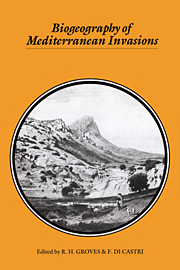
Biochore classification and nomenclature in paleobiogeography: an attempt at order
Gerd E.G. Westermann
Abstract: Paleobiogeographic terminology has increased dramatically in recent decades, but the absence of ‘rules’ or even a guide has resulted in confusion and misunderstanding. The Friends of Paleobiogeography are attempting to solve problems related to classification, definition and nomenclature of the biogeographic units (biochores), in conjunction with neobiogeographers. Historic and current developments are discussed. Biochores are highly dynamic units that not only expand and shrink in range, but also change in rank (tier) through time. They should be based on as many higher taxa as possible representing the biota, but from a single major biome, e.g. pelagic versus benthic; different biomes may need distinct sets of biochores. The following tentative ‘rules’ are proposed for a prospective guide for the distinction, ranking and naming of biochores, with emphasis on stability.
Definition: a biochore is defined by the overall endemism of its biota (not particular taxa) within a geographic envelope around a core area, whereas biochore boundaries are defined by the temporary range limits of their constituent endemic taxa.
Ranks (tiers): the biochores ranks are, with ‘bold’ for obligatory use and an additional tentative rank for exceptional conditions in brackets: [Superrealm], Realm, Subrealm, Province, Subprovince; ‘region’ is for informal use. Ranks scale with the degree of endemism as well as duration and biota distribution (range).
A typical region or chorotype and a typical stage (age) or chronotype are designated for each biochore.
Nomenclature: biochore names are geographic and related terms, not taxa-based. Nomenclatural priority begins with Uhlig [Mitt. Geol. Ges. Wien 4 (3) (1911) 229–448]. ‘Rules of Homology’ and ‘Synonymy’ apply in guide form only, e.g. long-term disuse of name or poor definition of biota invalidates synonym or homonym even if senior.
Keywords: biogeography; classification; nomenclature; paleobiogeography; terminology